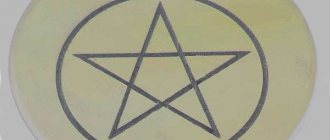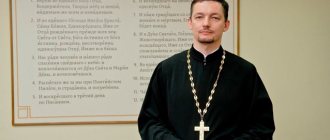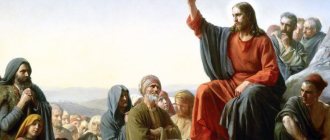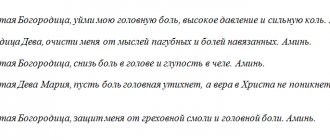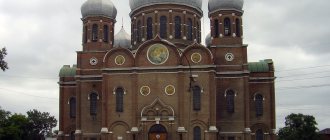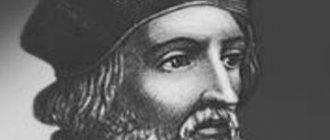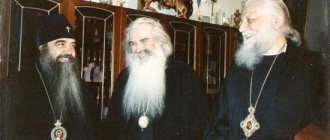According to tradition, a woman is required to cover her head with a scarf when entering an Orthodox church. Men, on the contrary, take off their hats and caps when they find themselves in church. Only priests can wear a headdress inside the temple.
The wearing of a headdress by a priest is regulated by the rules of the Charter. And the type of headdress of a clergyman depends on his rank. Moreover, there are award decorations, the use of which was regulated only under Emperor Paul I in the 18th century.
Clergy in Orthodoxy
The vestments of clergy, including the bishop's headdress, are associated with the history of the emergence of the priesthood, first in Judaism, then in Christianity. According to the Sinai legislation of the prophet Moses, three categories of priesthood were established in the Old Testament religion: high priest, priests and Levites.
In the Christian Church, three degrees of priesthood have also developed: bishops (bishops), priests (priests), and deacons. All of them are clergy, since through the Sacrament of ordination they received the grace of the Holy Spirit to serve the Church of Christ.
The direct heirs and continuers of the apostolic ministry are the bishops (Acts of the Apostles, 1:20, First Epistle to Timothy, 5:22). Priests are charged with the responsibility of proclaiming the Word of God (Titus 1:5). Deacons perform auxiliary functions during worship services (Acts of the Apostles 5:6). For external distinction, each degree of priesthood has its own special vestments and head coverings.
Miter - the liturgical headdress of a bishop
Everyday clothing of clergy
Regardless of the degree of priesthood, all clergy wear the same clothes in public places. For white clergy (married) this is a cassock and cassock. A cassock is a discreetly colored long shirt, almost reaching to the ground, with narrow sleeves. Cassock is a long, ground-length outer garment with wide sleeves, mostly black. However, the color of the church charter is not strictly specified. The headdress is a skufya, a small cloth or velvet cap in black (for honored priests - purple).
Black clergy (monastics) are required to wear the same clothing as white clergy. The only difference for them is the wearing of a mantle (a long sleeveless cloak) on special occasions. The headdress is a hood with a basting (veil).
Priests are required to wear a pectoral cross over their clothes. Bishops are required to additionally wear a panagia (a small decorated icon on a chain).
What does the pontiff wear in summer?
In summer they use zuchetto or pileolus. He appeared out of necessity. The head of the Catholic church minister has a shaved tonsure, which had to be protected from the cold temperature in the church. The zucchetto is made of eight wedges and has a small tail on top, and the pontiff's pileolus is always white, unlike the caps of cardinals, bishops and other prelates.
His Holiness John Paul II often gave his zuchetto to guests as souvenirs. And a small incident occurred with Pontiff Francis in Italy. While he blessed and kissed the five-year-old girl, leaning towards her, at that time she removed the zuchetto from his head, which did not offend, but only amused the Pope, who laughed at this along with everyone else.
The Pope's headdress, the pileolus, is always worn when Holy Mass is celebrated. Then it is removed for a while and placed on a small copper or wooden stand. After the rite of communion it is put on again.
Everyday vestments of a bishop
In the Russian Orthodox Church, bishops, depending on their rank, have special elements in clothing and headdresses.
On the black robe of bishops are sewn white and red ribbons and “tablets” (quadrangular plates sewn on the front). These ribbons are a symbol of the Gospel teaching, the grace of which emanates during the sermon of the bishop (successor of the apostles). “Tablets” are a symbol of the New and Old Testaments. The headdress is a simple black hood with a basting.
Archbishops (the most honored bishops) have a purple robe, with sewn ribbons and “tablets.” There is a small cross on the black hood with basting.
A blue mantle with ribbons and “tablets” is intended for the metropolitan (the bishop who leads the metropolis). The headdress is a white hood with a marking and a cross.
The Patriarch (the main bishop of the Local Church) has a green robe and a specially shaped white hood with images of seraphim, which is called a kukol (translated from Latin as “hood”). This headdress with its color symbolizes purity of thoughts.
Everyday attribute
The Pope's everyday headdress is a red hat with a low round crown and two gold cords that tie under the chin. It is made from beaver fur or felt. It has wide brims. Its name is cappello romano (“Roman hat”), and it received the addition “saturno” due to the similarity of its appearance to the ringed planet Saturn. Cappello Romano is not used in liturgical services.
In this article, we described, in as much detail as possible, all five hats that are in the wardrobe of His Holiness the Pope.
Liturgical vestments of bishops
During divine services, bishops put on a cassock, epitrachelion, armbands, a belt, a club and a sakkos (long outer garment without sleeves). Sakkos symbolically recalls the royal dignity of Jesus Christ. The bishop's vestment has a special detail - the omophorion (from Greek - “worn on the shoulders”), a very wide ribbon that is especially placed on the bishop’s shoulders. This is a sign of the highest hierarchical service.
Symbolically, the omophorion points to the lost sheep, that is, the people whom Jesus, as the good shepherd, “took” on his shoulders to return them to God (Gospel of John, 10:11). Bishops also have a sign of church authority - a rod. He reminds believers that all people are strangers on earth. The rod is also an attribute of the shepherd: following the example of Christ, the bishop is the shepherd, and the believers are the lambs of God over whom he leads.
The liturgical headdress of a bishop is a miter.
Clergy vestments
These robes, which have the general name "robes",
used by clergy during worship services.
They are divided into three categories: deacons, priests
and
bishops
(the attire of clergy who do not belong to the clergy does not fall into these categories). An interesting feature is the fact that each subsequent degree of priesthood has all the liturgical vestments of the previous one, plus those vestments that belong to their degree. That is, the priest has all the deacon’s robes and, in addition, those inherent in his rank; the bishop has all the priestly vestments (except for the phelonion, which is replaced by the sakkos) and, in addition, those assigned to his episcopal rank.
Deacon in liturgical vestments
Priest in liturgical vestments
Some of these clothes are symbols of grace-filled gifts, and without them the clergyman cannot perform divine services. Liturgical vestments
are:
1
.
For the deacon
-
cassock, bridle, surplice, orarion
;
2
.
For the priest
-
a cassock, a cassock
(during the Liturgy,
is worn
a cassock ), bridles, stole, belt, phelonion, pectoral cross;
3
.
For the bishop
-
a cassock, a cassock
(at the Liturgy, instead of a cassock -
a cassock ), armbands, epitrachelion, belt, club, sakkos
(instead of
a sakkos
there can be
a phelonion ), omophorion, panagia, cross, miter.
The clergy serve in a surplice.
The priest can perform some services without a phelonium
, and the bishop without
sakkos.
As a reward, priests are given the right to wear
a skufiya, kamilavka
or
miter
, as well as
a legguard, a club, and a cross with decorations.
Surplice
- liturgical vestments of priests and clergy.
There are different surplices
for clergy, deacon, priest and bishop.
The difference between the liturgical clothes of the lower rank of clergy - deacons - is that they serve in a cassock, over which a surplice is put on.
The surplice of a deacon (and a clergyman - an altar boy, a sexton) is a long garment, consisting of two halves, with wide sleeves, with slits from the armpits to the bottom, fastened with buttons.
The surplice
symbolizes the garment of salvation.
The priestly and bishop's surplice
are vestments called a sacristan.
Surplice
Podsnik
- liturgical vestments of a priest and bishop - long silk (less often made of other materials) clothes, waist-length, with narrow sleeves, white or yellow.
The bishop's vestment
has so-called
gammata
, or
springs -
ribbons that tighten the sleeve at the wrist.
The scales
symbolize the flow of blood from the Savior’s perforated hands.
As already mentioned, the cassock
replaces the cassock for the bishop or priest during the celebration of the Liturgy.
Podryznik
Handle
- part of the liturgical vestments of the clergy, which are trapezoidal strips of dense material with an image of a cross on their outer side, trimmed along the edges with a ribbon that has a different shade than the
arms
.
Another name for armbands is sleeves,
which means that this part of the liturgical vestment is fixed on the wrist, on the sleeve of the cassock.
The handrail
is tightened with a cord threaded through metal loops on its side edges, and the cord is tightly wrapped around the hand and held firmly to it.
The orders
symbolize God's power, strength and wisdom bestowed on the clergy to perform the Divine Sacraments.
Orar
- part of the liturgical vestment of a deacon and subdeacon - a long narrow ribbon worn by them on the left shoulder, with one end going down to the chest, the other to the back.
The orarion
belongs only to deacons and received its name from the Greek verb “oro”, which means I look, guard, observe.
However, in Latin there is a verb absolutely identical in spelling (Latin
verb “
oro
”), but meaning “to pray.”
Another meaning of the word orar is
towel, lention (from
Latin orarium).
Orar
The archdeacon and protodeacon have a double orarion,
which consists of
two connected oraria
: one is worn similarly to the deacon’s, and the second descends from the left shoulder to the right thigh, where it is connected at the ends.
Orar
symbolizes the grace-filled gifts that the deacon receives upon ordination.
The subdeacon puts on the orarion
in the shape of a cross, as a sign that he does not have the grace of a clergyman.
According to the interpretation of St. John Chrysostom, the orarion
symbolizes immaterial angelic wings in accordance with the image of angelic service in the Church, which is personified by deacons.
Stole
(
Greek
: neck) - an accessory to the liturgical vestments of a priest and bishop, which is a long ribbon (a deacon’s orarion, but as if doubled), covering the neck and descending at both ends to the chest.
It is sewn or fastened with buttons at the front and is worn over a cassock or cassock. The epitrachelion
formed from the orarion meant that the priest acquired greater grace than the deacon, giving him the right and obligation to be the celebrant of the Sacraments of the Church.
The epitrachelion
symbolizes the priest's grace-filled gifts that he receives in the Sacrament of the Priesthood.
That is why, when putting on the stole
, the prayer is read: “Blessed is God, pour out His grace on His priests, like Myrrh on the head, descending on the bard, the bard of Aaron, descending on the sweeps of his clothes” (see: Ps. 132; 2).
Epitrachelion and poruchi
Without stole
priests and bishops do not have the right to perform divine services. Only in extremely difficult circumstances can any long piece of cloth or rope, especially blessed, be used instead.
Belt
- part of the liturgical vestments of the priest and bishop, worn over the vestment and epitrachelion, is a dense, 10–15 cm wide, strip of material with trim in the form of stripes of a different shade along the edges.
in the middle of the belt
, and at its ends there are long ribbons with which it is secured at the back, on the lower back.
The belt resembles the towel with which the Savior girded when washing the feet of His disciples at the Last Supper. Symbolically, the belt
in religious use has always meant strength, strength, power, readiness to serve, which is clearly reflected in the prayer read when putting it on: “Blessed be God, gird me with strength, and make my path blameless; Place me on high” (see: Ps. 17; 33.34). It still has the same meaning today.
Belt
Felony
- the liturgical vestment of a priest, which is a long cape reaching to the toes (from the back), which in front reaches only to the waist.
It has a slit for the head and a raised rigid shoulder, without sleeves. on the phelonion
, which mean the Four Gospels, the ministers and evangelists of which are bishops and priests.
The stripes also mean Divine protection, grace, strength and wisdom bestowed on the clergyman performing the Sacraments of the Church. On the back, in the upper part of the phelonion,
under the shoulder stripe, just like on the surplice
the sign of the cross
, and below, under the cross, closer to the hem, there is
an eight-pointed star.
The star and cross on
the phelonion
mark the union in the Orthodox Church of the grace of the priesthood of the Old (star) and New (cross) Testaments.
Felonne
There is also a short
or
a small felonion,
covering the body only to the waist (and less in front than in back). Worn during initiation into the clergy and not used in other services.
Felony
in the ancient Church they were white.
Simeon, Archbishop of Thessalonica, gives the following explanation of the symbolic meaning of the phelonion
: “The whiteness of this clothing means purity, holiness and the radiance of the Glory of God, for God is light and is dressed in light, like a robe... The phelonion is sewn without sleeves in the image of the sackcloth in which the Savior was dressed in time for scolding. This priestly garment covers the entire body, from head to feet, in the image of God's Providence, which from the beginning supports and protects us. During the sacred rite, the phelonion is raised with both hands, and these hands, like wings, signify angelic dignity, and the actions performed by them, the effective force with which the priest performs the Sacrament. The sacred phelonion means the highest and bestowed power and enlightenment of the Holy Spirit. This clothing signifies both the lordship of the first ranks of the Mountains, and the power of God, containing everything, providential, omnipotent, beneficial, by which the Word descended even to us and through the incarnation, crucifixion and rebellion united everything above with what is below.”
In the ancient Church, phelonies belonging to patriarchs and metropolitans
were completely covered with images of crosses and were therefore called
polystauria (Greek
: polycross).
The material for sewing phelonions
is gold and silver brocade, as well as fabrics of other primary colors used in worship.
Gaiter
is part of the liturgical vestments of some priests and is a rectangle worn on a long ribbon at the hip.
The right to wear the loincloth
is given to priests as a reward.
The gaiter
is seen as a symbolic representation of spiritual weapons - the word of God.
This thought is expressed in the verses of the psalm, which the priest must read while putting on the breechcloth
: “Gird Thy sword upon Thy thigh, O Mighty One, with Thy beauty and Thy kindness; Thou art wondrously Thy right hand, always, now and ever, and unto the ages of ages” (see: Ps. 44; 4.5).
Gaiter
Gaiter
trimmed along the edges with a sewn strip of fabric different from that from which it itself is sewn.
in the center of the loincloth
, and its lower edge is usually decorated with fringe.
Mace
- part of the liturgical vestment of a bishop, archimandrite or priest (given to priests as a reward), which is a cloth rhombus, hung at one of the sharp corners and worn on a ribbon at the right hip.
Mace
When, as a reward for diligent service, the right to carry a club
Archpriests receive it, then they also wear it on the right side, and in this case the legguard moves to the left.
For archimandrites, as for bishops, the club
serves as a necessary accessory to their vestments.
The symbolic meaning of the club
is similar to that of the legguard, that is, both of these objects mean the spiritual sword of the word of God (the diamond shape
of the club
means the Four Gospels).
What kind of service the clergy are performing at the moment determines what and how many items of liturgical attire they will use. So little
the priestly
vestments
in which all evening and morning services and services are served, except for the Liturgy, consist of:
epitrachelion, bridles
and
phelonion.
Full vestment
used during the service of the Liturgy and in other cases provided for by the Charter.
It consists of: a cassock,
over which
an epitrachelion is put on,
then
a guard, a belt, a legguard
and
a club
(whoever has them), as well as
a phelonion.
Since
the legguard
and
club
are awards for the clergy and not every priest has them, they are not among the obligatory items of vestment.
Bishop in liturgical vestments
Bishops have a much wider range of vestments. To the above items are added such as sakkos, omophorion, miter
(although it may be a reward for a very distinguished priest, in this case it is not crowned with a cross),
the bishop's staff
and
mantle.
The items
of full bishop's vestments
do not include three of the above:
the miter, the bishop's staff
and
the mantle.
Thus,
the full episcopal liturgical vestment
, in accordance with the seven Sacraments that the bishop performs, contains
seven main items: a vestment, an epitrachelion, a brace, a belt, a club, an omophorion and a sakkos.
Sakkos
Sakkos
(
Hebrew
rags, sackcloth) - the liturgical vestment of a bishop: long to the toes, loose clothing with wide sleeves, sewn from expensive fabric.
The sakkos
in appearance resembles the deacon's surplice, with the difference that it is cut completely: along the underside of the sleeves and on the sides to the floor.
Along the cut line it is connected by so-called bells, which replace the buttons of the deacon's surplices that perform similar functions, but in addition to this they emit melodic sounds at those moments when the bishop moves. on top of the sakkos
.
Sakkos
spiritually means the same thing as phelonion.
This determines the fact that when putting it on there is no special prayer, only the deacon reads during the vesting of the bishop: “Your bishops, O Lord, will be clothed in truth.” Sakkos
, as a rule, are sewn from expensive brocade and decorated with images of crosses.
Front half of sakkos
symbolizes the priesthood of the New Testament, the back - the Old Testament. Their connection by bells symbolically means the inseparable, but also not confused, succession of this priesthood in Christ. Another symbolic meaning of this connection is the dual nature of the bishop's ministry to both God and people.
Omophorion
(
Greek
: worn on the shoulders) - part of the liturgical vestment of the bishop.
omophorion
has two sewn transverse stripes at its ends - a sign of strict renunciation of all vain things.
The two main symbolic meanings acquired by the omophorion
are the following: the bishop’s likeness to Christ in caring for the salvation of people and the special fullness of Divine grace and power granted to the bishop for this.
Great Omophorion
There are two types of omophorion:
1
.
The great omophorion
is a long wide ribbon with images of crosses.
It goes around the bishop's neck and descends with one end onto his chest and the other onto his back. the great omophorion
from the beginning of the Liturgy until the reading of the Apostle.
2
.
The small omophorion
is a wide ribbon with images of crosses, which descends at both ends onto the chest and is sewn or secured with buttons in front.
Worn over the sakkos. Symbolically depicts the blessed gifts of the bishop, therefore without an omophorion
the bishop cannot officiate.
The bishop performs all divine services in the great omophorion
, except for the Liturgy, which, after reading the Apostle, is performed in
the small omophorion.
But
the small omophorion
does not replace the stole.
Bishop's staff with sulko
Sew omophores
from brocade, silk and other fabrics of different colors accepted in the Church.
Bishop's staff (staff)
- This is a symbol of the spiritual archpastoral authority of the bishop over the church people, given by Christ to His disciples, called to preach the word of God.
According to the interpretation of Blessed Simeon, Archbishop of Thessalonica, “the rod that the bishop holds means the power of the Spirit, the affirmation and shepherding of people, the power to guide, to punish those who do not submit and to gather those who are far away to oneself. Therefore, the rod has handles (horns on top of the rod), like anchors. And over those hilts the Cross of Christ means victory.” bishop's staffs,
especially metropolitan and patriarchal ones, with precious stones, overlays, and inlays.
A special feature of Russian bishop's staffs is the sulok
- two scarves inserted into one another and fixed at the handle. In Rus', its appearance was determined by harsh weather conditions: the lower scarf was supposed to protect the hand from touching the cold metal of the rod, and the upper one was supposed to protect it from the frost outside.
Patriarchal Robe
Bishop's robe
Bishop's robe,
Unlike the robe of a simple monk, it is purple (for bishops), blue (for metropolitans) and green (for His Holiness the Patriarch).
In addition, the bishop's mantle
is larger and longer.
On its front side, at the shoulders and at the hem, “tablets”
- rectangles with trim along the edges and crosses or icons inside the shoulder rectangles.
The lower ones may contain the bishop's initials. The tablets
on
the mantle
mean that the bishop, while ruling the Church, must be guided by the commandments of God.
Across the entire width of the mantle
three wide two-color stripes pass through, called
sources
, or
jets.
They symbolically depict the teaching itself, as if “flowing” from the Old and New Testaments and the preaching of which is the duty of bishops, as well as the teaching grace of the bishopric.
Spiritually, the mantle
repeats some of the symbolic meanings of the phelonion, sakkos and omophorion, as if “replacing” them, since it is worn when these liturgical vestments (except for the omophorion) are not on the bishop.
The bishop's robe
is used during ceremonial processions, at the entrance to the temple and at divine services, at moments determined by the Charter.
In general, when putting on liturgical clothes, the mantle
is removed.
Miter
(
Greek
bandage worn on the head) is a headdress that is part of the bishop’s vestments.
It is also included in the liturgical vestments of archimandrites and those priests who are given the right to wear the miter
as a reward.
It has a pear shape. Usually made of velvet stripes on a rigid frame, decorated with small and medium-sized pearls in the form of a floral pattern (as one of the options); In general, there are a lot of options for decorating a miter
.
On the sides of the miter
there are four small icons: the Savior, the Mother of God, John the Baptist and some saint or holiday;
the upper part is crowned with an icon of the Holy Trinity or Seraphim. Instead of an icon, a small cross is placed on the top of the bishop's miter
.
Miter
Bishop's Headdress: Everyday Option
The everyday headdress of the Orthodox clergy includes skufya. Translated from Greek, this word means “bowl”. It is a small soft pointed cap, the folds of which form the image of a cross. For bishops, an additional cross is sewn onto the black skufia.
Klobuk translated from the Turkic language means “cap”. This black headdress is an attribute of monastic vestments. Klobuk is a cylindrical hat with trimmed edges (also called kamilavka) with a cover attached to it, which has three long ends (“bastings”). This is the “helmet of salvation” and the “veil of obedience,” as stated in the order of monastic tonsure. The hood acquired its modern form in the 17th century, first in the Greek Orthodox Church. Then it became widespread in the Russian Church. Until this time, it had a spherical shape.
The hood is also a headdress for bishops and is worn outside of services. Metropolitans have a white hood with a cross sewn on it. For bishops and archbishops it is black.
The hood, which has retained its hemispherical shape, with a cross and images of seraphim sewn on it, is the non-liturgical headdress of the patriarch.
Why do men take off their hats in church?
In the Orthodox Church there is no direct prohibition on lay people wearing headdresses in church. Rather, men who remove their hats when entering a church pay tribute to an ancient tradition. It is based on the letter to the Corinthians of the Apostle Paul. According to him, men should not cover their heads, since they are the image and glory of God. Women are the glory of their men, so they, on the contrary, must cover their heads in the temple.
And among Orthodox priests, the wearing of headdresses is regulated by special rules of the Charter. During services, the headdress must be on the priest’s head almost constantly.
